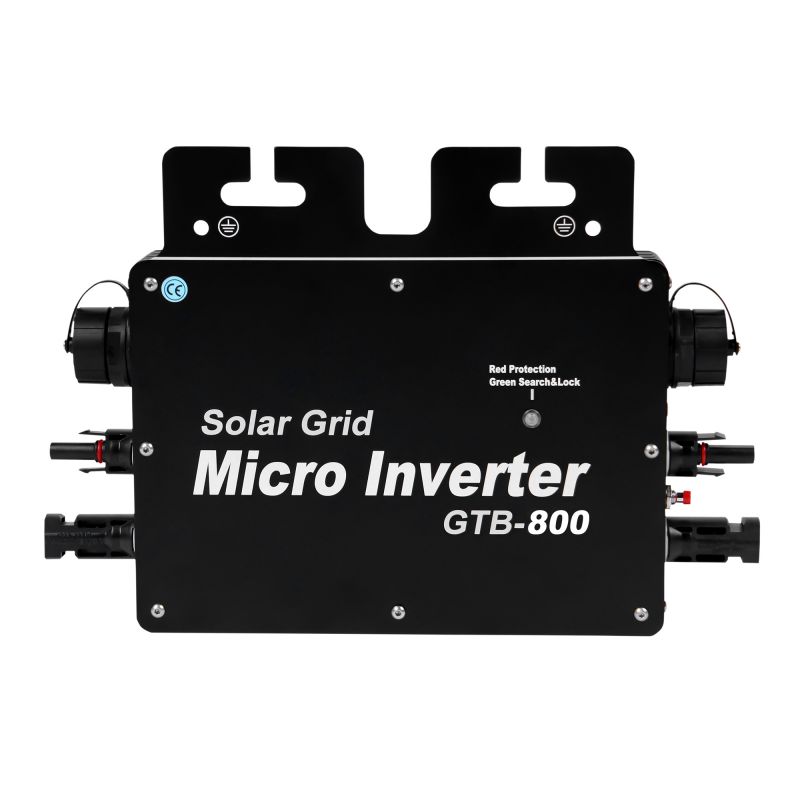Partner content: This content was created by a business partner of Dow Jones and researched and written independently of the MarketWatch newsroom. Links in this article may result in us earning a commission. Learn More
Get a free, personalized quote for your solar project below. Solar Wind Hybrid System

Leonardo David is an electromechanical engineer, MBA, energy consultant and technical writer. His energy-efficiency and solar consulting experience covers sectors including banking, textile manufacturing, plastics processing, pharmaceutics, education, food processing, real estate and retail. He has also been writing articles about energy and engineering topics since 2015.
Tori Addison is an editor who has worked in the digital marketing industry for over five years. Her experience includes communications and marketing work in the nonprofit, governmental and academic sectors. A journalist by trade, she started her career covering politics and news in New York’s Hudson Valley. Her work included coverage of local and state budgets, federal financial regulations and health care legislation.
Thin-film solar panels convert sunlight into electricity using a thin layer of photovoltaic (PV) material instead of traditional silicon cells. Thin-film modules are available in both rigid and flexible versions, and you can find adhesive panels that easily attach to vertical and curved surfaces — like the roof of a camper van.
The MarketWatch Guides Team has reviewed the top residential solar panels to help you navigate the solar buying process. Read on to learn more about thin-film solar panels, including the different types, costs and ideal uses.
There are two main ways to manufacture solar panels. Traditional PV modules consist of an array of crystalline silicon (c-Si) cells wired together in a circuit. On the other hand, thin-film panels use a single layer of photovoltaic material that is not divided into visible cells. The layers are 300 to 350 times thinner than silicon solar panels, making thin-film panels much lighter than their conventional counterparts.
Like with silicon panels, you can use a rigid frame to mount thin-film materials. Or they can be affixed to a flexible substrate (like plastic) with an adhesive back and pasted on many types of surfaces. For example, you can easily install adhesive panels on a recreational vehicle (RV) with a curved roof, whereas mounting rigid solar panels would be more difficult.
Thanks to their lower weight and reduced thickness, you can use thin-film panels in applications not suitable for silicon solar cells — like portable solar systems. But thin-film panels are less efficient and must cover a larger area to achieve the same energy output as traditional panels. However, thin-film panels can achieve lower temperature coefficients than crystalline silicon panels, meaning their output is less impacted by warm weather.
Conventional solar panels are made of silicon in crystalline form, known as c-Si. Unlike thin-film panels, traditional panels have photovoltaic cells cut from silicon wafers of single crystals (monocrystalline) or multiple crystals (polycrystalline). Thin-film panels are made of whole layers of PV material, not small silicon cells.
You can classify thin-film solar panels based on the material. The four main types include:
Amorphous silicon (a-Si) panels use the same material as traditional photovoltaic cells. But with thin-film panels, the silicon has a non-crystalline or “amorphous” structure. These panels use less silicon than traditional solar modules and, as a result, are more affordable. Amorphous silicon panels were the first thin-film PV technology to be developed. You can find the technology used in older calculators and other small gadgets.
Amorphous silicon panels have a typical energy conversion efficiency of 6% to 8%, while the best crystalline silicon panels approach 23% efficiency.
+ Lightweight and affordable + Uses non-toxic materials + Can have a rigid or flexible design – Low energy efficiency – Rapid efficiency loss after installation – Shorter lifespan than crystalline silicon panels
Cadmium telluride (CdTe) panels are more efficient than amorphous silicon panels, ranging from 9% to 15%. They are the most popular panels in the thin-film solar industry, representing around half of the global market share. First Solar is one of the leading manufacturers of CdTe panels, having invested over $1.5 billion to develop this solar technology.
The main downside of CdTe panels is the use of cadmium, a highly toxic metal. Cadmium does not represent a risk when the panels are generating electricity. However, it can be a risk for factory workers exposed during manufacturing, and disposal is a problem.
+ Higher efficiency than amorphous silicon panels + Low manufacturing and installation costs + Shorter payback period than other thin-film panels – Uses Cadmium, which is a toxic metal – Less efficient than crystalline silicon panels – Flexible CdTe panels can be hard to find
Copper indium gallium diselenide (CIGS) panels use different semiconductor materials that are arranged in layers. CIGS panels have a typical efficiency of 12% to 14%, comparable to the performance of CdTe panels. CIGS technology is also compatible with multiple materials such as steel, aluminum, glass and plastics.
The main drawback of CIGS thin-film panels is their high production cost, which results in a longer payback period. Some CIGS panels also use cadmium, creating the same environmental issues as CdTe panels. However, manufacturers are replacing cadmium with zinc oxides, which are much safer materials.
+ Higher efficiency than amorphous silicon panels + Compatible with multiple materials and surfaces + Rigid and flexible panels are available – More expensive than other thin-film panels – Many CIGS modules contain cadmium – Longer payback period than other thin-film panels
Organic photovoltaic (OPV) panels use polymers and other organic materials with photovoltaic properties to produce energy. OPV panels have an efficiency of around 11%, which is higher than the efficiency of a-Si panels. However, OPV panels feature lower efficiency ratings than CdTe and CIGS panels.
Since organic materials are abundant and inexpensive, OPV panels are very affordable. But organic photovoltaic materials are less durable than the inorganic compounds used in other thin-film technologies.
+ Low-cost manufacturing process + Available in many colors due to the variability of absorbers + Organic PV materials are abundant and safe – Lower efficiency than most PV technologies – Shorter lifespan than inorganic solar cells
When comparing traditional and thin-film solar panels, the best option depends on your intended application. Crystalline silicon panels can convert sunlight into electricity two to three times more efficiently than their thin-film counterparts, making silicon panels ideal for homes and businesses. However, traditional panels have rigid and bulky frames and can weigh up to 40 to 50 pounds.
Thin-film modules are a better option for vehicles and vertical surfaces thanks to their lightweight design. You can also find flexible thin-film panels with an adhesive backing, which you can use on curved surfaces where traditional panels are not a viable option.
Thin-film solar panels typically cost around $1 to $1.50 per watt. Comparatively, a solar power system with traditional panels costs around $2.85 per watt.
Thin-film solar panels are not commonly used in rooftop installations due to their lower efficiency. Here’s a breakdown of why:
Thin-film panels are better suited for portable and small-scale applications or vertical and curved surfaces (like an RV). You can purchase flexible thin-film panels individually for less than $100. Some solar PV kits also include a battery with alternating current (AC) and direct current (DC) outlets to convert solar energy to usable electricity. Portable power stations can range from less than $1,000 to $5,000, depending on the wattage and battery capacity.
We recommend using traditional PV modules to generate large amounts of electricity for your home or business. Regardless of the type of panel you install, you can claim the federal solar tax credit to reduce your overall system cost.
The complexity of installing thin-film panels depends on your system configuration. Some thin-film panels have a rigid frame and can be used in rooftop or ground-mount systems. However, the best solar companies may recommend traditional solar panels in this case, since they will generate two to three times more electricity per square foot.
Adhesive thin-film panels and portable solar kits are much easier to set up on your own. These panels feature lower voltages and wattages, and most systems are designed for DIY installations. However, you should consider a professional installation if you plan to use adhesive solar panels on elevated surfaces.
All types of solar panels have maintenance needs. Regularly cleaning thin-film solar panels can prevent dust from accumulating, which can block the amount of sunlight that reaches their surface. Use a soft brush or cloth and avoid any cleaning tools that may cause scratches. Also, avoid chemical cleaning agents that can damage the PV material or other components.
Installation recommendations for traditional solar panels also apply to thin-film PV cells. You will generate more electricity if you install thin-film panels in unshaded areas and watch out for trees or other elements that could block your panels.
Thin-film panels are ideal for portable and lightweight solar energy systems. For example, thin-film panels are an excellent option for generating electricity on a vehicle (like a camper) without adding too much weight.
Some thin-film panels are adhesive, which you can easily set up on vertical and curved surfaces. Thin-film panels can also integrate with construction elements such as windows and roof shingles, thanks to their compatibility with different materials. This concept is known as building-integrated photovoltaics (BIPV).
Thin-film panels are not generally recommended for a rooftop or ground-mount solar system with several kilowatts of capacity. Thin-film panels must cover a larger area to generate the same electricity output as traditional panels and are less durable. For these reasons, conventional silicon panels are best for home installations.
Thin-film panels are ideal for vehicles and other portable applications thanks to their low weight and reduced thickness. Some thin-film panels are flexible and have an adhesive backing that you can attach to vertical and curved surfaces, like the roof of an RV. Thin-film solar cells are lighter, thinner and less expensive than traditional silicon panels.
However, thin-film panels have a much lower efficiency. For this reason, thin-film panels are not generally the best choice for powering your home.
Thin-film solar panels typically cost around $1 to $1.50 per watt, which is cheaper than silicon alternatives. Most thin-film solar technologies have low costs, but some materials — like CIGS panels — will be more expensive. Installation costs also vary depending on the application. For example, adhesive thin-film panels are much easier to install than rigid panels with a racking system.
There are many thin-film photovoltaic materials, but the most common include:
The National Renewable Energy Laboratory (NREL) is also studying gallium arsenide (GaAs), a promising material with high efficiency. However, the high cost of this solar cell technology has been an obstacle for commercial use.
Thin-film and traditional solar cells both utilize the photovoltaic effect. When exposed to sunlight or other light sources, the electrons in their photovoltaic material gain energy and start moving. This creates a voltage and current output you can harness to produce electricity. Traditional solar systems combine the output of multiple panels by wiring them together, which generates enough power to run your home.
Leonardo David is an electromechanical engineer, MBA, energy consultant and technical writer. His energy-efficiency and solar consulting experience covers sectors including banking, textile manufacturing, plastics processing, pharmaceutics, education, food processing, real estate and retail. He has also been writing articles about energy and engineering topics since 2015.
Tori Addison is an editor who has worked in the digital marketing industry for over five years. Her experience includes communications and marketing work in the nonprofit, governmental and academic sectors. A journalist by trade, she started her career covering politics and news in New York’s Hudson Valley. Her work included coverage of local and state budgets, federal financial regulations and health care legislation.
Copyright © 2023 MarketWatch, Inc. All rights reserved.

PTZ camera By using this site you agree to the Subscriber Agreement & Terms of Use, Privacy Notice, and Cookie Notice.